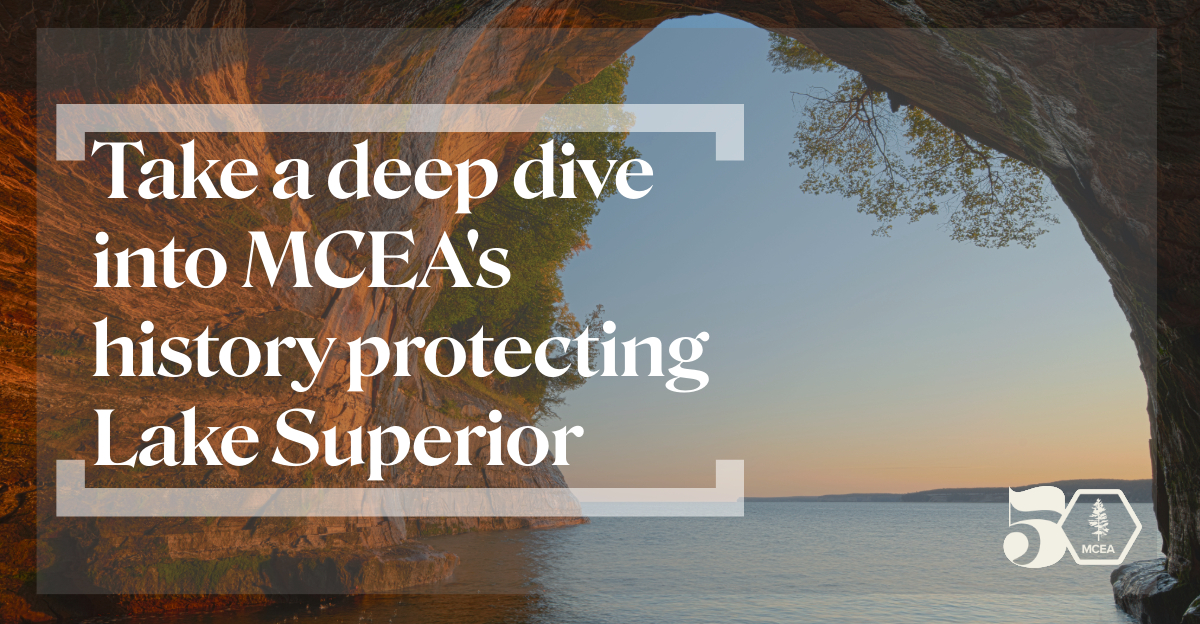50 years of fighting for Lake Superior

By Sarah Horner, Communications Director
This is wild but true. Back in the 1960s, Reserve Mining was operating its massive taconite mine on the North Shore. The process involved crushing the rock, removing the iron ore, turning it into pellets and then dumping the leftover waste- called tailings - directly into Lake Superior. A lot of it, too. In fact, a New York Times article written at the time said the company dumped nearly 67,000 tons of tailings into Lake Superior daily, creating a flat expanse of land at the lake’s shoreline.
The waste was believed to contain microscopic asbestos fibers that could cause cancer and a host of other health problems if ingested. The material was found in Lake Superior drinking water in Duluth and elsewhere along the North Shore.
Minnesota’s Attorney General’s office intervened and sued Reserve Mining to stop the practice. The state won, creating a new legal question: where would Reserve Mining dump its tailings instead? That’s when MCEA got involved. We advocated for a tailings basin at a location called MilePost 20, which would have created a larger land buffer and more protection for Lake Superior. We prevailed at the administrative level, but the case eventually made its way to the Minnesota Supreme Court. After Reserve Mining threatened to shut down the mine, the Court agreed to let the company build its tailings basin at what is now called MilePost 7 instead. The now infamous tailings basin is perched above Beaver Bay just three miles uphill from Lake Superior. The company preferred the spot because it allowed for cheaper transport, even though we and others argued it posed a much greater risk to Lake Superior and the people living nearby in Beaver Bay and Silver Bay.
A few years ago, MilePost 7’s new owner, Northshore Mining, proposed a massive expansion of the tailings basin. Once again, MCEA was there. Working alongside partner groups, we petitioned the Minnesota Department of Natural Resources to conduct an Environmental Assessment Worksheet (EAW) to better understand the associated risks.
After we started our push, Northshore Mining decided to scale down its expansion plan. And though DNR initially refused to conduct an environmental review of the smaller proposal, our sustained pressure led the agency to conduct an EAW of certain features of the expansion. We urged DNR to go further and conduct a broader Environmental Impact Statement (EIS), update dam safety provisions in the project’s permit, and ensure Northshore Mining had set aside sufficient financial resources for future cleanup.
While DNR ultimately refused to conduct an EIS, it did commit to update the project’s permits to better address dam safety. It also committed to reviewing the amount of money the company should set aside for cleanup before the expansion can move forward. Neither would have happened without MCEA and our partner groups’ involvement. Now we’re watching the permitting process, ready to ensure DNR follows through with its commitments to better watch and regulate dam safety at MilePost 7.
“If it weren’t for the efforts of MCEA and our partners, DNR would have quietly approved a much larger tailings basin expansion for Northshore Mining years ago, without any public process at all,” said Joy Anderson, supervising attorney at MCEA. “Because of our work, the public knows more about the dangers of the dams at MilePost 7, and DNR has been compelled to take a closer look at the project. Fifty years ago, we worked to keep Lake Superior safe from mining pollution, and we’re continuing that fight today.”